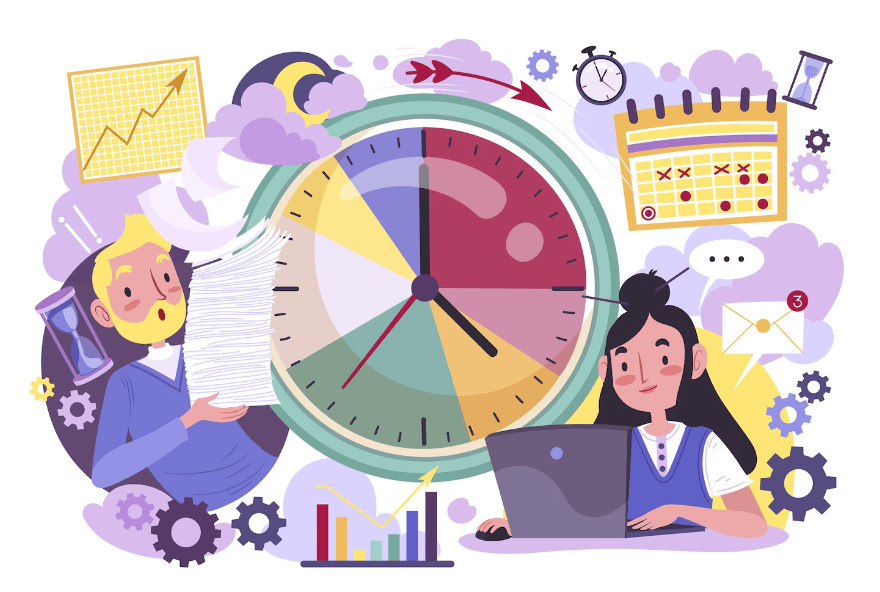In today’s fast-paced business world, the concepts of efficiency and productivity are often mentioned in the same breath, yet they delineate distinctly different aspects of performance optimization. Efficiency refers to the ability to accomplish a task with minimal waste of time and resources. At the same time, productivity is the measure of the output generated in a given period.
Understanding the nuanced difference between these two is critical for organizations aiming to maximize their operations and for individuals striving to enhance their work output. This exposition aims to dissect and analyze these concepts, providing clarity on how they intersect and diverge and offering insights on leveraging both to achieve superior performance levels.
Understanding Productivity
At its core, productivity can be defined as the rate at which performance output is generated within a given timeframe. Given that performance metrics are relatively straightforward to quantify, productivity often becomes a focal point of analysis. Typically, productivity is assessed by comparing the output volumes over consistent periods. Consider, for example, the scenario of assembling cars. If you assemble 75 vehicles in a day but only 40 are operational, compared to a colleague who assembles 40 fully functional vehicles, she is deemed more productive in terms of quality output.
However, measuring productivity in service-oriented sectors like customer service introduces complexity. Instead of purely quantifying output, evaluating productivity involves comparative analysis among departments or employees, among other factors. For instance, in a cellphone retail scenario, an employee who secures $5,000 in new activations might be seen as less productive than one who achieves $10,000 in service upgrades, depending on the value assigned to each action within the business model.
Productivity categorization varies widely across different industries and is shaped by the nature of the goods or services provided. Numerous apps and tools are available to aid in tracking and improving productivity, facilitating more efficient business operations and the potential for increased profits.
Calculating Productivity
Determining your business’s productivity can be succinctly performed by dividing total output by total input, which yields a measure of productivity. For example, if your company produces products valued at $100,000 in one week (your output), with the effort of 2,000 labor hours (your input), your labor productivity calculation would be $100,000 divided by 2,000, resulting in $50. This figure represents the value generated for every hour of labor.
What Is Efficiency?
Consider our earlier example with the worker who assembled 40 fully functional cars. This scenario perfectly illustrates the essence of efficiency: achieving high-quality results with minimal errors or waste. At first glance, efficiency and productivity are the same, mainly when you operate efficiently and produce quality work. However, efficiency focuses on the quality and precision of the output rather than the quantity alone.
Take, for instance, the scenario in the cell phone store where technicians are tasked with repairing customer phones. Imagine two technicians, each assigned to fix 50 phones, making a total of 100 phones repaired between them. If customers return 20 phones due to one technician’s subpar repairs, the other technician, whose repairs remained intact, exemplifies efficiency by ensuring quality on the first attempt.
Efficiency boils down to executing tasks correctly from the outset. While this might result in a lower initial output compared to peers, the absence of the need to correct mistakes means these individuals are more efficient members of the team. Doing things right the first time not only saves additional labor but also conserves company resources.
Calculating Efficiency
Efficiency calculation is straightforward. Simply divide the actual number of labor hours it took to complete a task by the standard expected hours, then multiply by 100 to get a percentage. This figure effectively indicates the efficiency level of employees. A higher percentage reflects a higher efficiency level, demonstrating the employee’s ability to deliver quality work within or under the expected time frame.
The Core Difference Between Efficiency and Productivity
The fundamental difference between efficiency and productivity hinges on their focus and measurement dimensions. Productivity emphasizes the volume of output within a given timeframe, measuring the extent to which resources are converted into outputs. It is inherently quantitative, focusing on the “how much” aspect of work output, making it suitable for comparison over time or against competitors.
Efficiency, on the other hand, zeros in on the quality of the output and the optimization of the resources used to achieve it. This concept values the minimization of waste—whether that’s in time, materials, or effort—to produce a desired result. It’s qualitatively measured, emphasizing the “how well” aspect of performance, considering not just the end product but the process undertaken to achieve it.
Conclusion
In the dynamic world of business and personal development, understanding and distinguishing between efficiency and productivity becomes a pivotal skill. While both qualities drive success, they cater to different aspects of performance and improvement. Productivity focuses on the volume of output over time, which is essential for measuring and scaling operations in any industry.
Efficiency, on the other hand, emphasizes the quality of the output and the minimization of resources and time to achieve a goal, ensuring sustainable and qualitative growth. Balancing both elements is crucial in optimizing overall performance, fostering an environment where qualitative output does not sacrifice quantity and vice versa.
By implementing strategies that enhance both productivity and efficiency, individuals and organizations can ensure they are not just doing things right but also doing the right things effectively. This dual focus paves the way for continuous improvement, innovation, and long-term success in any endeavor.

